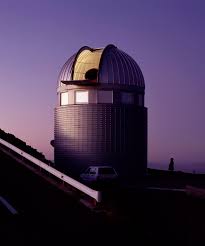Circumbinary planets are planets that orbit a binary star, rather than a single star, in contrast to most planets known. Possibly they formed out of the same disk of material that formed the two stars. So long as the planet is sufficiently far from the binary, its orbit can be stable.
Several circumbinary planets were discovered by the Kepler mission, but the first such planet found using TESS has recently been announced by Veselin Kostov et al.
Here is the TESS lightcurve of “target of interest” TOI-1338:

Six-percent-deep eclipses recur every 14.6 days, when a small, M-dwarf star eclipses its Sun-like companion. But, when one looks more closely at portions of the lightcurve, one also sees:

Near Day 1483 is a deep eclipse (truncated in this plot). Near Day 1577 is a shallower secondary eclipse, when the Sun-like star eclipses the M-dwarf star. But, in addition, and highlighted by green bands, are two transits where a Saturn-like planet in a wide, 95-day orbit, transits the Sun-like star.
The interest, from the WASP point of view, is that the eclipsing binary had already been found by the WASP survey. The primary eclipses were too deep to be caused by a Jupiter-size planet, and were instead found to be caused by the M-dwarf, but such systems are interesting in their own right, and thus formed the “EBLM” programme offshoot from WASP, led by Amaury Triaud.
Since the eclipsing binary was already known to be an interesting system, this meant it could be observed with 2-min cadence in the TESS survey (instead of the default 30-min cadence data), and that made the detection of the circumbinary-planet transits much easier.

Above is an illustration of how the planet’s orbit precesses around the inner binary over time. The inner binary is illustrated in black and grey. The coloured dots show how the orbit of the planet changes over 2000 days. When the planet passes within the grey ellipses, transits can be seen.

 Congratulations to Dr Amaury Triaud, now at the University of Birmingham, recipient of the 2020 Fowler Award from the Royal Astronomical Society. The
Congratulations to Dr Amaury Triaud, now at the University of Birmingham, recipient of the 2020 Fowler Award from the Royal Astronomical Society. The 